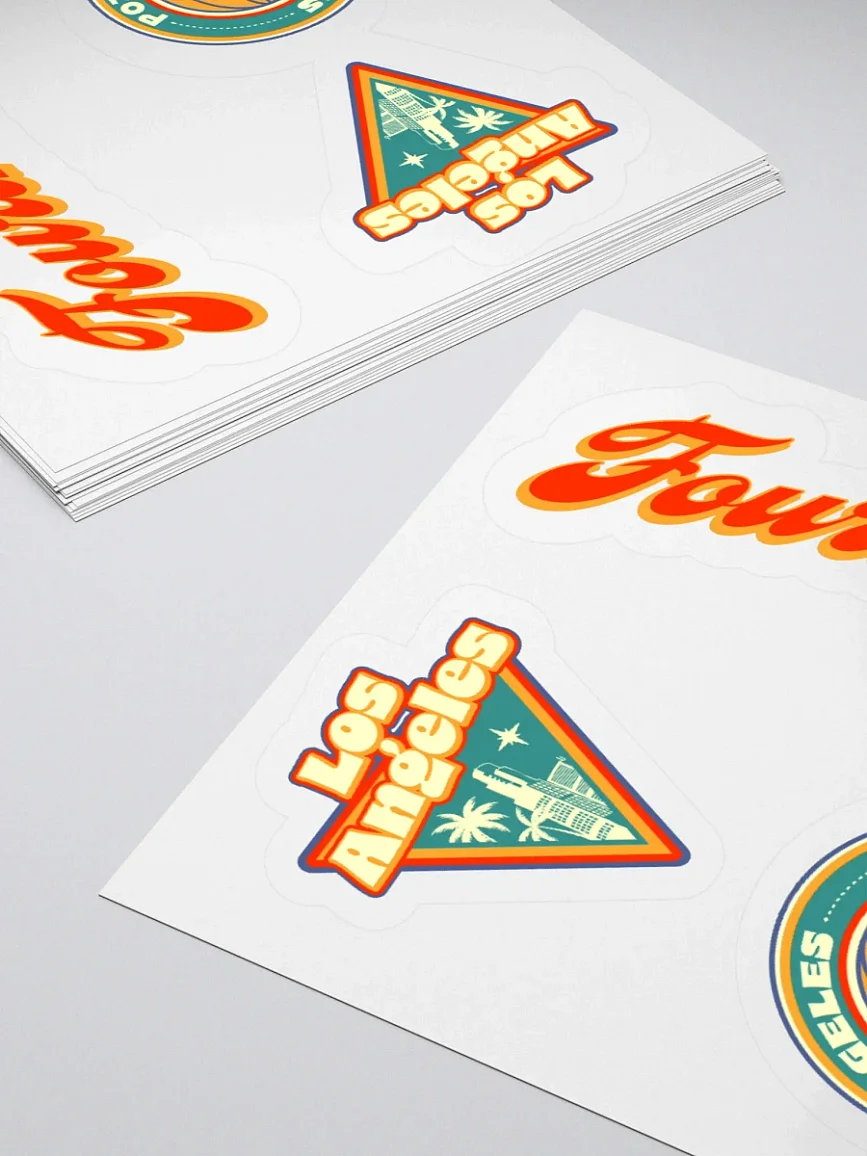Why Visual Storytelling is Important for Your Brand

Visual storytelling has a rich history of educating, engaging, and motivating audiences for centuries. From the prehistoric polychrome cave paintings in Altamira, Spain, to modern-day graphic novels like Alan Moore's Watchmen and V for Vendetta, visual storytelling has remained a timeless instrument for creators to engage and connect with their audience. With the digital age bringing new tools and technologies and a spike in video content, visual storytelling is more relevant than ever. In this article, we'll explore visual storytelling, its main elements and benefits, and provide some tips and examples of impactful visual storytelling.
What is Visual Storytelling?
Visual storytelling transcends mere video or image creation; it is a comprehensive strategy that empowers creators to utilize diverse forms of visual content in crafting a brand narrative tailored to their target audience. This approach is crucial for creators, emphasizing the ability to communicate that their brand's story aligns with their audience's desires, needs, and expectations.
Whether conveyed through film, television, websites, or social media platforms like YouTube, Instagram, and TikTok, the narrative becomes a conduit for capturing and illustrating a brand's unique voice. Visual storytelling, as a pivotal element in content marketing, aims to resonate with viewers emotionally and provide valuable information that enhances their understanding of why engaging with that creator is beneficial.
Why it's Important for Your Brand
Incorporating visual storytelling elements in your content is crucial as visuals have a unique ability to captivate attention and engage audiences more rapidly. By leveraging the power of images, videos, animation, and graphics, creators can enhance brand recognition while creating a dynamic and immersive experience for their audience. To further illustrate, here are some key benefits of how integrating visual storytelling in your content can improve your brand:
Capture audience attention:
The human brain processes visuals faster than text, making them a powerful tool for capturing and retaining audience attention. Visual storytelling strategically utilizes images, videos, and graphics to engage viewers, drawing them into the narrative instantly. This heightened engagement sets the stage for a more immersive brand experience, where the audience is not only attentive but actively involved in the story.
Increases engagement faster:
Visual storytelling can be more engaging and entertaining, keeping your audience tuned throughout your message. Consider platforms like TikTok, where short, visually-driven videos have become a dominant form of communication. Brands that understand the visual language of these platforms can create content that resonates quickly with their target audience, ensuring that the message is received, appreciated, and shared.
Easier to remember:
Visuals are inherently easier for people to remember compared to text, a phenomenon known as the "picture superiority effect." When information is presented in a visual format, it is more likely to be retained in memory. Brands can leverage this aspect of visual storytelling by creating memorable visuals that encapsulate their key messages. For instance, infographics or visually striking graphics can convey complex information in a simplified and memorable way, ensuring that the audience retains and recalls the brand's core concepts.
Creates an emotional connection:
Visuals possess a unique ability to elicit emotions, creating a deeper and more meaningful connection between a creator and their audience. By integrating emotionally resonant images or videos into their storytelling, brands can humanize their message, making it relatable and impactful. An example is the use of storytelling in advertising campaigns, where poignant visuals can elicit emotions ranging from joy to empathy, creating a lasting connection with the audience. This emotional dimension enhances brand loyalty and ensures that the brand becomes associated with positive feelings and experiences.
More shareable:
Visual content, being inherently engaging, is more likely to be shared across social media platforms. The shareability of visual storytelling amplifies the reach and impact of a brand's message as audiences become active participants in spreading the narrative. Creators can design their content by incorporating elements that encourage users to share, such as visually appealing quotes, interactive graphics, or behind-the-scenes glimpses. This viral potential not only expands the brand's visibility but also leverages the collective influence of engaged audiences, creating a ripple effect that extends the brand's reach organically.
8 Tips to Create an Impactful Visual Storytelling
Now that you have a better understanding of the importance of incorporating visual storytelling into your content, here are some tips to help you create an impactful experience for your audience:
1. Keep it simple:
Embrace the power of simplicity in your visuals to help boost the impact of your storytelling. Just like in a well-edited YouTube tutorial where each step is presented with clarity and minimal distractions, a straightforward visual approach not only aids comprehension but also ensures a visually pleasing experience. Maintaining a clean and uncluttered aesthetic ensures that your audience's attention is directed precisely where it needs to be, eliminating unnecessary distractions.
2. Show, don’t tell:
Use visuals to show your message rather than simply telling it. This can create a more engaging and memorable experience for your audience. For instance, if your niche is fitness, consider using before-and-after images to showcase the transformative power of a product or the evolution of your fitness journey.
3. Include interactive elements strategically:
Integrate interactive elements thoughtfully to elevate engagement, turning your visual storytelling into a participatory experience. This could involve clickable elements, quizzes, or immersive features that encourage active audience involvement.
4. Utilize contrasting colors:
Contrasting colors can be used to draw attention to essential elements in your message. For example, a food blog might use vibrant contrasting colors to highlight key ingredients in a recipe, making the visuals more appetizing. This technique helps guide your audience's attention to the most important aspects of your content, enhancing the overall impact.
5. Use emotion to create a connection:
Use visuals to create an emotional connection with your audience, helping them to connect with your message on a deeper level. An environmental campaign on Instagram and Twitter/X could employ powerful imagery of endangered species to evoke empathy and inspire action.
6. Consider your audience:
Tailor your visuals with your audience in mind, ensuring they are easily understandable and resonate with your viewers personally. Look into your target audience's preferences, expectations, and cultural nuances to craft visuals that help strike a chord in them.
7. Use storytelling techniques:
Use storytelling techniques to create a compelling, engaging narrative that resonates with your audience. A travel vlogger on YouTube could use stunning video imagery to guide viewers through an exciting journey, captivating them with each destination's unique story. Remember, your audience wants to be captivated by your content, so make it memorable!
8. Use the power of sound:
Sound can be just as powerful as visuals in creating an emotional connection with your audience. For instance, a cooking tutorial could incorporate background music and the sizzling sounds of ingredients cooking to create a more immersive and enjoyable experience. Consider using music, sound effects, and voiceovers to enhance your visual storytelling and create a more engaging and memorable experience.
3 Examples of Visual Storytelling to Inspire You
Here are some examples of creators who incorporate visual storytelling in their content:
1. Casey Neistat
Renowned YouTuber and filmmaker Casey Neistat exemplifies mastery in visual storytelling through his vlogs. Neistat's blending of compelling narratives and striking visuals provides an energetic glimpse into his bustling lifestyle in New York. His skillful use of time-lapses and aerial drone shots adds a touch of grandiosity to his stories, elevating the overall visual appeal. Beyond visuals, Neistat meticulously selects soundtracks that align with his story's narrative, creating an authentic, creative, and immersive experience for the audience, transforming ordinary moments into captivating stories.
2. The Blonde Abroad
Kiersten Rich, aka The Blonde Abroad, is a travel influencer who effectively employs visual storytelling to transport her audience to awe-inspiring destinations through her Instagram feed. Rich's adeptness in crafting vibrant and aesthetically pleasing images is immediately evident upon viewing her profile. Each post serves as a carefully designed visual narrative, where Rich highlights the beauty of her travel destinations and shares her personal experiences and emotions. Rich's consistent use of bright, warm tones throughout her feed creates an inviting atmosphere, evoking a profound sense of wanderlust and adventure in her content.
3. Maddi Winter
TikTok star Maddi Winter exhibits a unique approach to visual storytelling by incorporating animation into her videos. Known for drawing colorful illustrations onto her viral dance videos, Winter's content has since evolved, employing her impressive editing skills to illustrate her everyday activities. Winter's use of transitions and graphics not only complements her videos but also adds an extra layer of visual appeal, making her content stand out in TikTok's competitive landscape. Because of this, Winter has acquired a massive following of fans who are awed by her vibrant personality and inspired by her constant creativity and talent.
Leverage Your Brand with Fourthwall!
If you're looking to enhance your personal brand's visual storytelling, Fourthwall can help. Our platform enables content creators to launch a website, source and sell products, and offer memberships to their supporters. With Fourthwall, you can customize your website and leverage the power of visual storytelling to create a compelling and engaging experience for your followers.
















